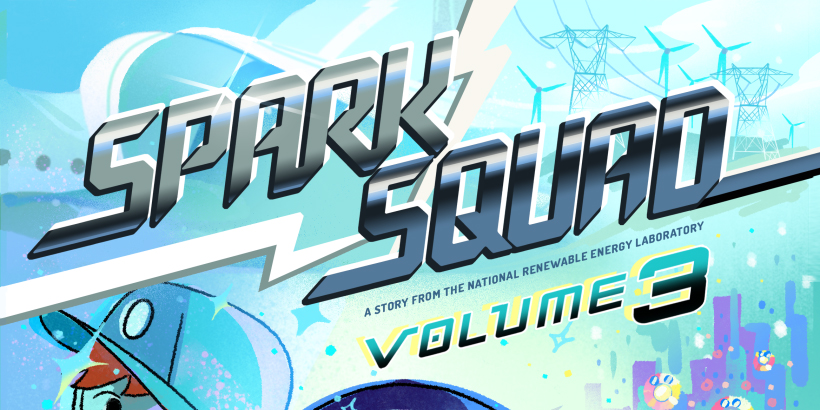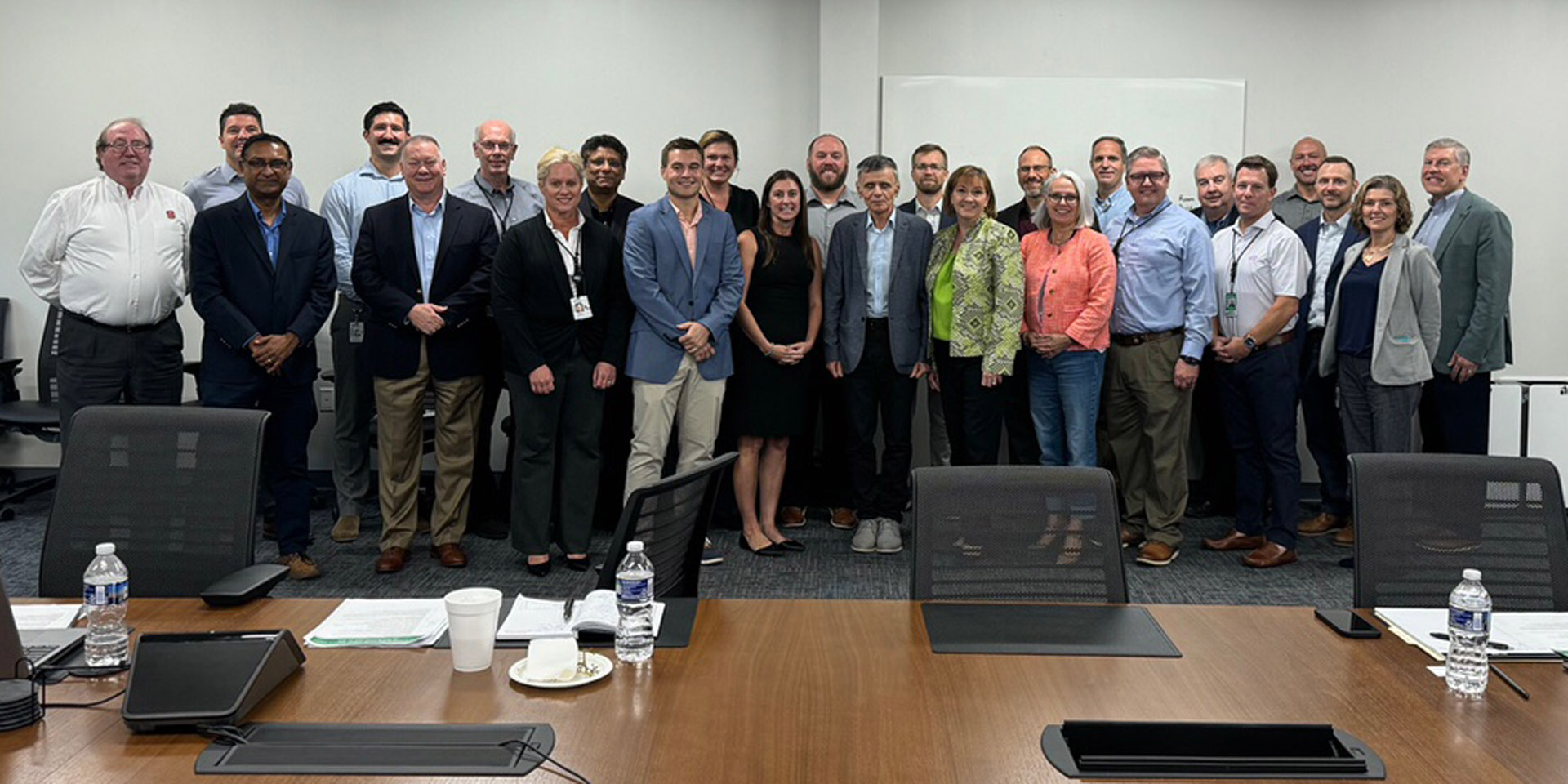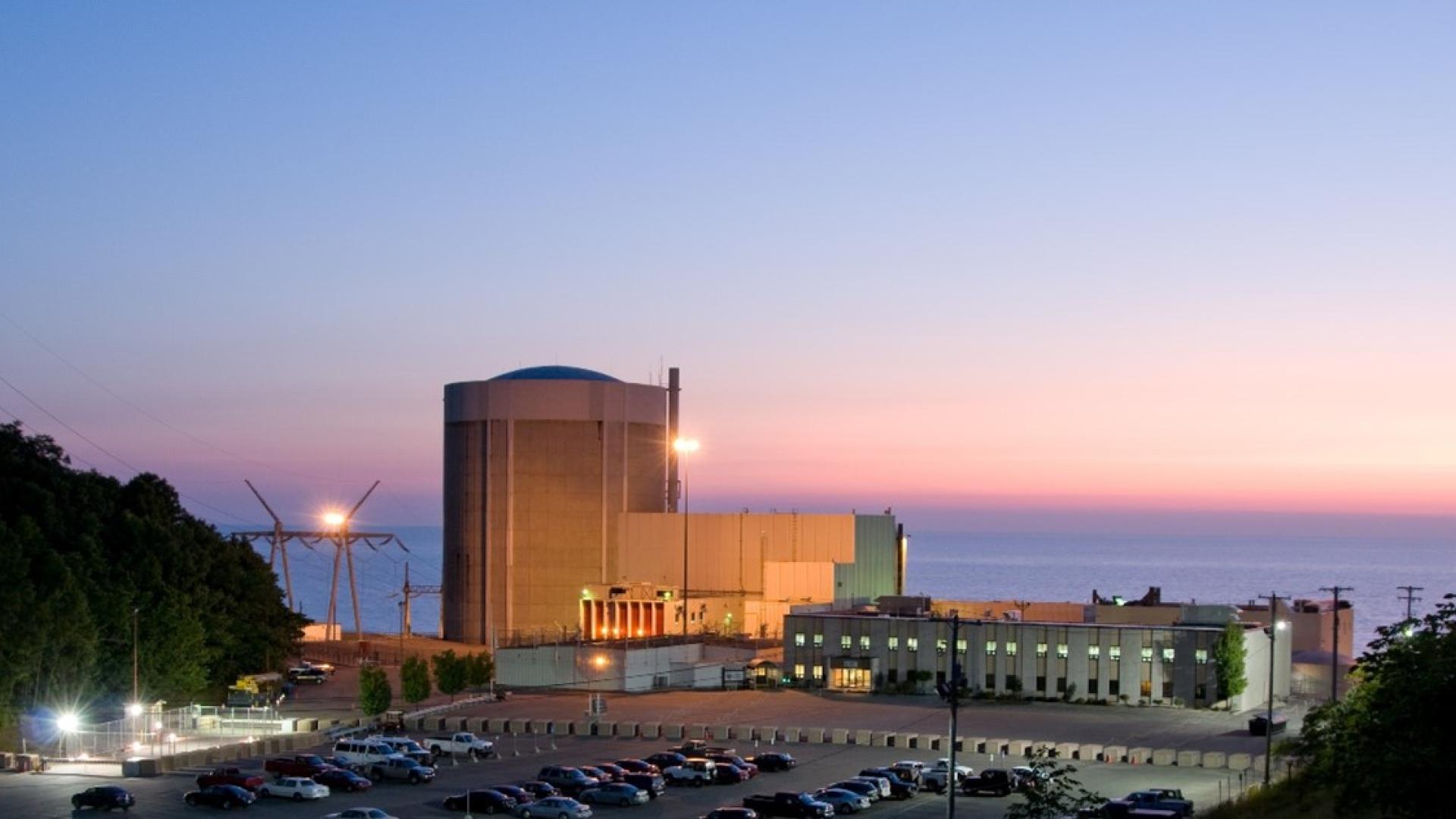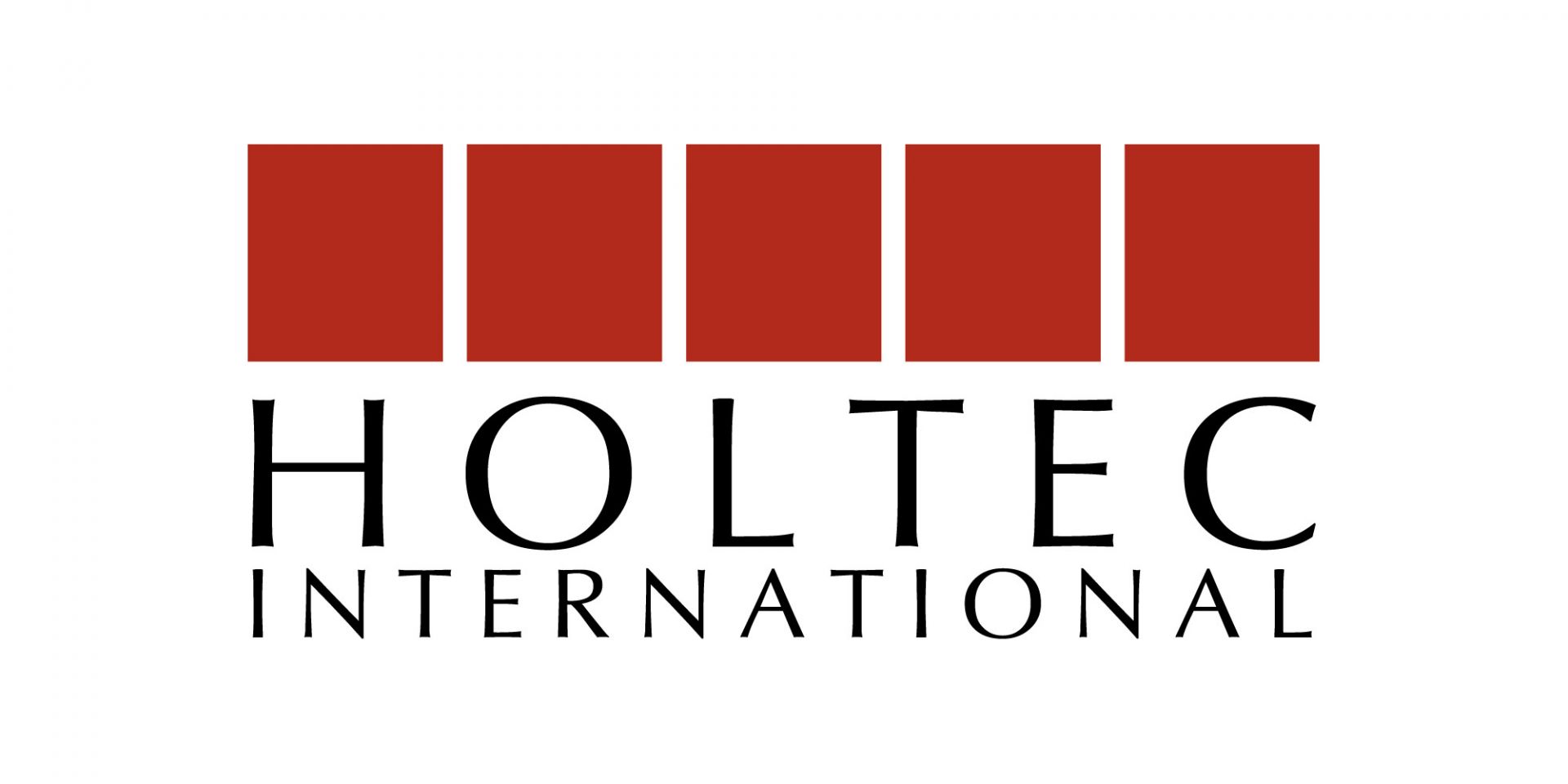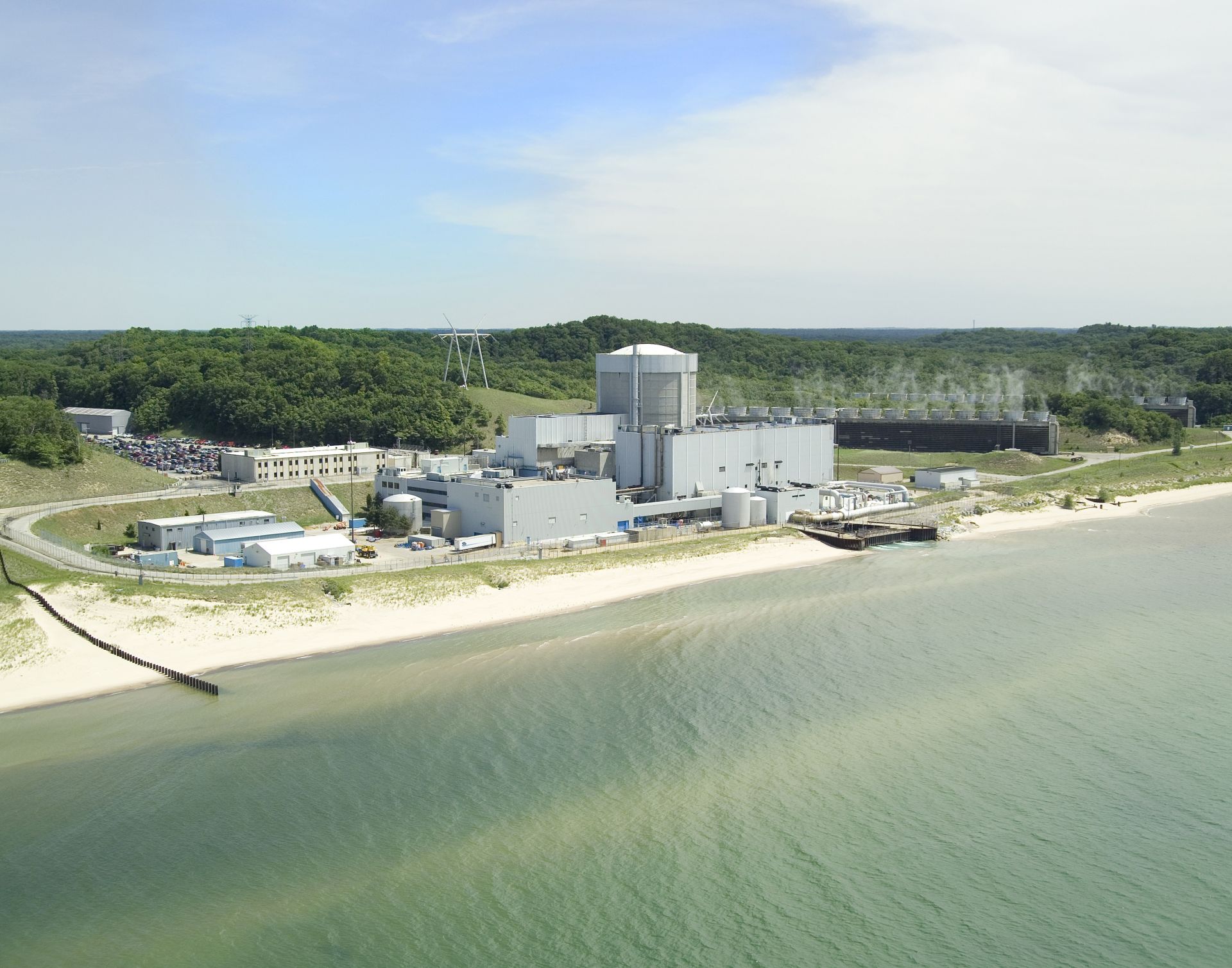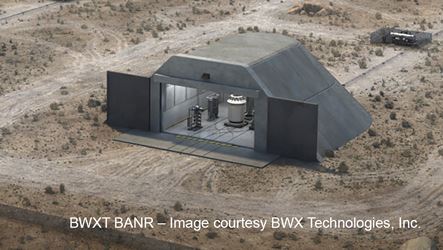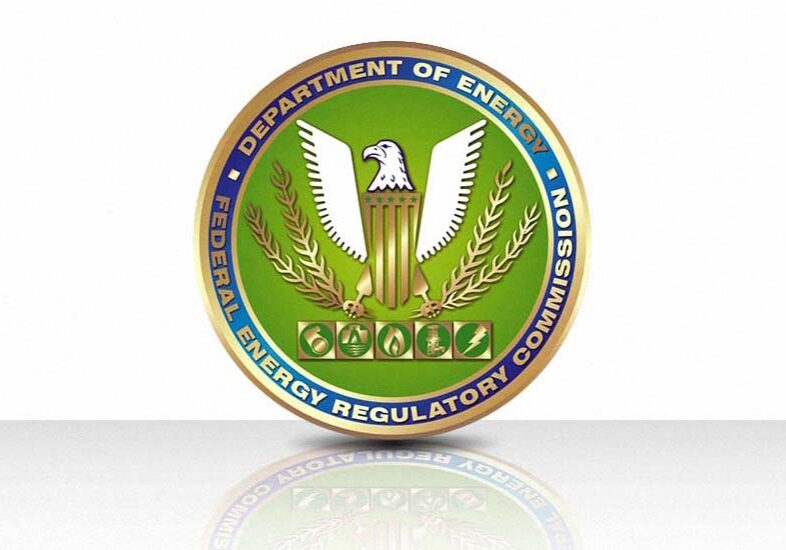Framatome’s GAIA Protect EATF assembly. (Photo: Framatome)
Framatome’s enhanced accident tolerant fuel assemblies recently completed a third 18-month fuel cycle at Southern Nuclear’s Vogtle-2 plant—the first of this type of fuel to reach this milestone in the U.S., the company said.
Screen capture from a GameDay broadcast. (Image: University of Michigan)
Nuclear advocates across the country have been asking fans to cheer for more than just touchdowns this college football season. They want people to learn about and support nuclear energy.
They want them to “heart” nuclear as much as they do.
Attendees at the North Carolina Nuclear Energy Industry Advisory Council meeting. (Photo: Steve Rea)
A mix of nuclear professionals and advocates gathered las week to discuss public policy, workforce needs, and regulatory matters at a meeting of the North Carolina Nuclear Energy Industry Advisory Council.
Palisades nuclear power plant in Covert, Mich. (Photo: Entergy)
The Michigan Department of Environment, Great Lakes, and Energy (EGLE) is holding a virtual public hearing on Tuesday, October 1, to provide information and take comments on the proposed reissuance of a surface water permit for Palisades nuclear plant in Covert, Mich.
NRC accepting hearing requests on Holtec’s restart plans
The Department of Energy has signed off on a $1.5 billion loan guarantee to Holtec Palisades LLC to support initial work needed to restart the Michigan nuclear plant.
The Palisades nuclear power plant during days of operation. (Photo: Entergy Nuclear)
Dozens gathered last week at a public hearing hosted by the Nuclear Regulatory Commission to get feedback on the proposal to restart the Palisades nuclear power plant in Michigan.
The NRC is beginning its environmental review of plans to repower Palisades after it was shut down in May 2022 and was headed for permanent decommissioning. If the restart is successful, this would be the first return to service of a shuttered U.S. nuclear plant.
An aerial photo of Three Mile Island nuclear power station. (Photo: Constellation)
Constellation Energy is in talks with the governor’s office and state legislators about funding to restart a unit at Three Mile Island nuclear plant, Reuters has reported. The ongoing talks have been described as “beyond preliminary” by two sources.
Concept art of BWXT’s BANR microreactor. (Source: BWXT)
BWX Technologies Inc. received the second phase of a contract with the Wyoming Energy Authority to assess the viability of deploying small-scale nuclear reactors in the state.
The company’s subsidiary, BWXT Advanced Technologies LLC, has been executing the agreement, working with the state of Wyoming to define the requirements for nuclear applications and to study the engineering work needed to support the state’s future power needs. BWXT identified areas where Wyoming’s supply chain could support nuclear reactor component manufacturing.
Oklo’s Aurora Powerhouse (Image: Gensler)
California-based Oklo is partnering with Wyoming Hyperscale to power a state-of-the-art data center campus.
The companies, which announced the partnership last week, signed a nonbinding letter of intent to provide 100 megawatts of carbon-free energy for a 20-year power purchase agreement. Wyoming Hyperscale is building a data center on 58 acres of land on Aspen Mountain, a remote site southeast of Evanston, Wyo., and plans to use Oklo’s Aurora Powerhouse units to provide clean energy at the site.
Energy Fuels’ White Mesa Mill in southeastern Utah is the only operating conventional uranium mill in the United States. (Photo: Energy Fuels)
The U.S. Senate approved April 30—by unanimous consent—a bill banning the importation of Russian uranium. The House of Representatives passed the bill, House Resolution 1042, last fall, and now President Biden is expected to sign it into law.





